Liquid filling machines are indispensable tools in various industries, including pharmaceuticals, beverages, and personal care products. These machines streamline the filling process, ensuring that each container receives the precise amount of liquid—no more, no less, though the initial liquid filling machine cost varies significantly based on application requirements.
While they are commonly referred to as “liquid filling machines,” they are versatile enough to handle liquids with varying viscosities, from thin to thick, with different viscosity-handling capabilities directly impacting liquid filling machine pricing through specialized pump or piston configurations.
How Much Does A Liquid Filling Machine Cost? A Comprehensive Guide by SFXB
At SFXB, we specialize in manufacturing high-quality liquid filling machines that cater to diverse production needs. If you’re considering investing in a liquid filling machine, one of your primary concerns is likely the cost. The price of a liquid filling machine can vary significantly based on its features, capacity, and specific production requirements. In this article, we will explore the factors that influence the cost of liquid filling machines and help you make an informed purchasing decision.
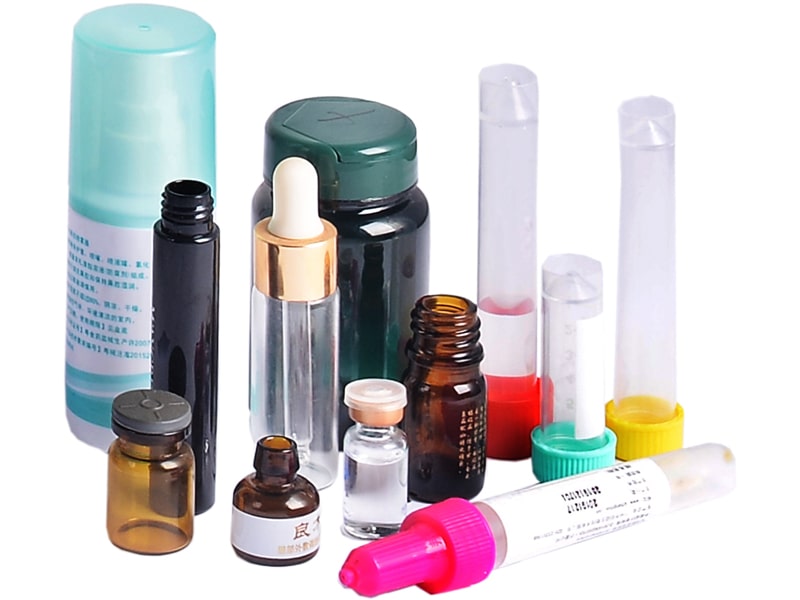
Types of Liquid Filling Machines
Before purchasing a liquid filling machine, it’s essential to understand the different types available. Liquid filling machines are categorized based on their level of automation and the filling technology they employ.
Based on Automation Level
1. Manual Liquid Filling Machines: These are the most basic type of liquid filling machines. They require an operator to perform most of the tasks. Manual machines are straightforward to use—simply set the volume, pull the control lever, and fill. They are ideal for startups or small businesses with limited budgets.
2. Semi-Automatic Liquid Filling Machines: These machines automate some of the processes, reducing the need for manual intervention. While an operator is still required, the level of manual work is significantly less compared to manual machines. Semi-automatic machines are perfect for businesses that require higher precision and handle moderate liquid volumes.
3. Fully Automatic Liquid Filling Machines: These are the most advanced models. With just the push of a few buttons, the machine handles the entire filling process. Fully automatic machines are designed for high-capacity, high-speed operations. In today’s market, automatic liquid filling machines typically come in two types: inline and integrated filling systems.
Based on Filling Technology
1. Gravity Filling Machines: These machines use gravity to fill containers with liquid. They are simple and effective, ensuring a consistent fill volume.
2. Pump Filling Machines: These machines use peristaltic or rotary pumps to transfer liquid into containers. They are versatile and can handle a wide range of liquid viscosities, from thin to thick.
| XBZXY-2 matrix high precision rotary valve plunger ceramic pump filling machine
Rotary valve plunger ceramic pump and servo drive with an accuracy of up to ±0.25%. |
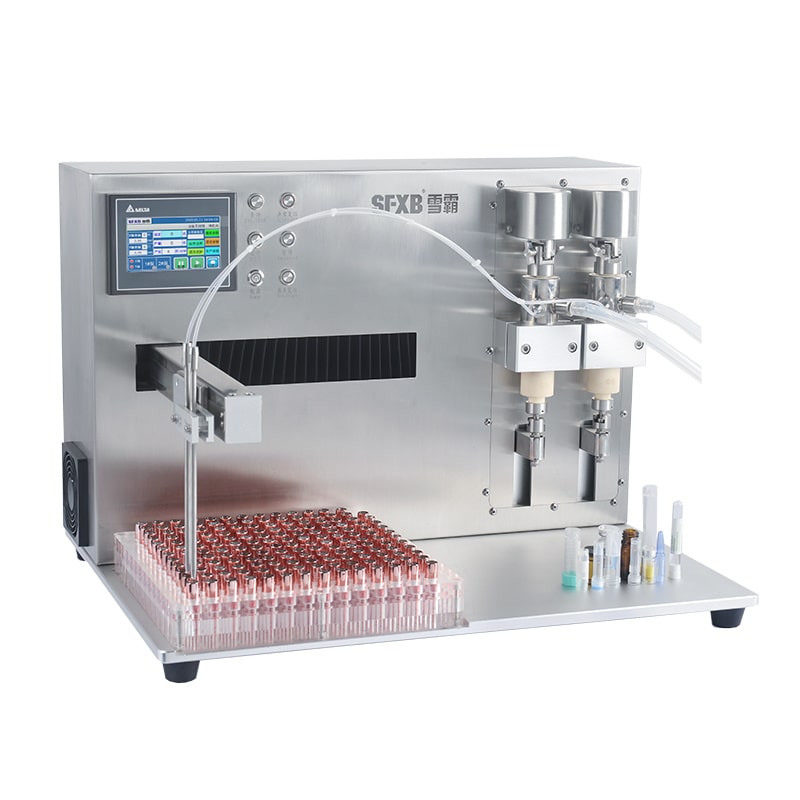 |
3. Piston Filling Machines: These machines draw liquid into a cylinder and then use a piston to dispense it. The length of the piston stroke is directly related to the fill volume.
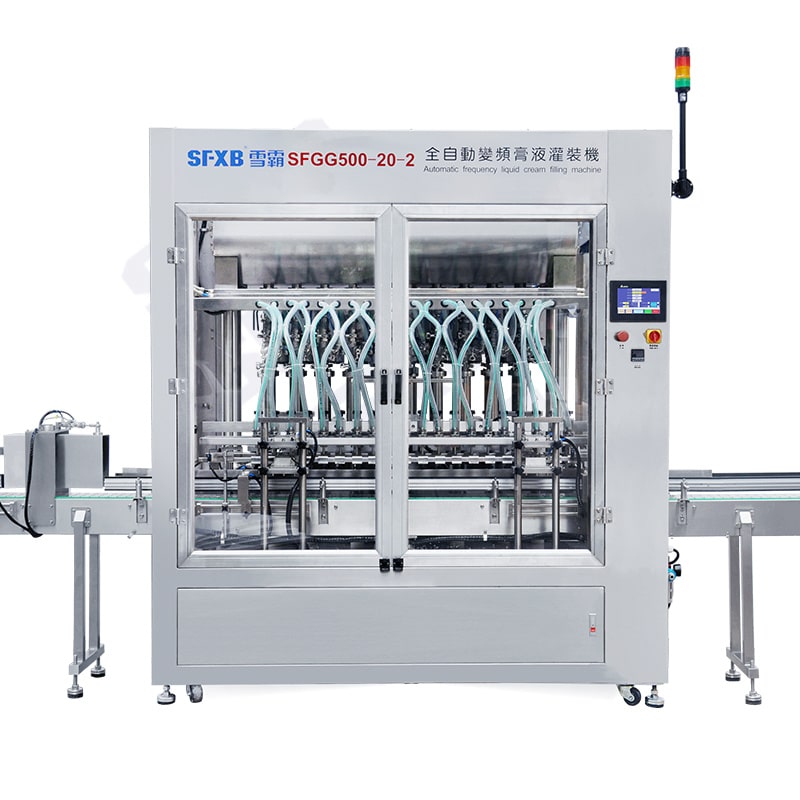 |
XBGG series automatic multi-head servo drive piston filling machine
Suitable for filling various sauces, pastes and liquids, with strong versatility |
4. Overflow Filling Machines: These machines fill containers by immersing the nozzle into the container. Once the liquid reaches the desired level, the nozzle retracts. Overflow filling machines ensure a consistent fill level and prevent spillage.
5. Vacuum Filling Machines: These machines create a vacuum to draw liquid into containers. They are typically used for filling thicker, more viscous liquids.
| XBKG-18 Fully automatic 18-head rotary vacuum filling machine (small and medium caliber glass bottles)
Vacuum differential pressure equal liquid level filling, anti-foaming and anti-drip |
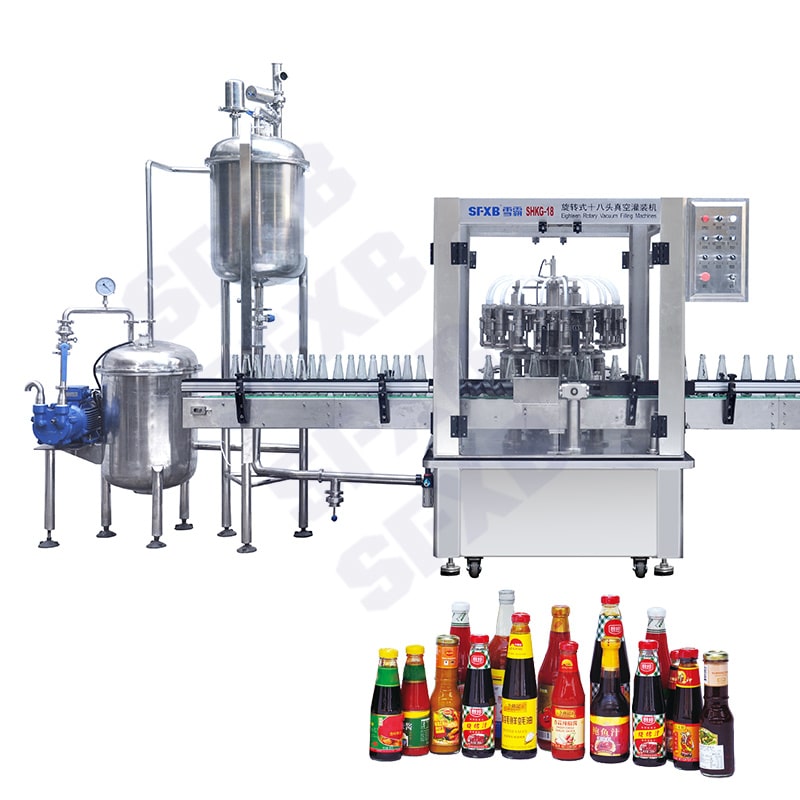 |
6. Net Weight Filling Machines: These machines focus on filling by weight rather than volume. They use scales to ensure each container reaches the correct weight.
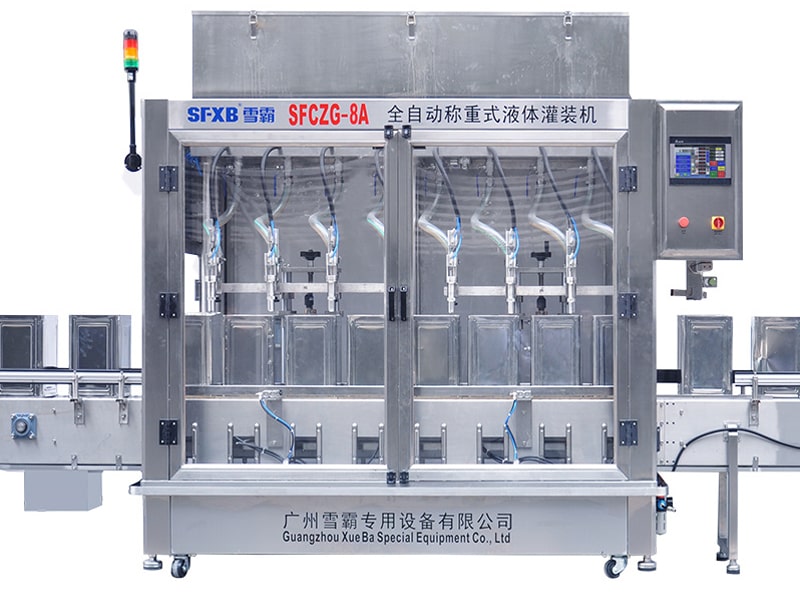 |
XBCZ series automatic weighing liquid filling machine
Food, medicine, cosmetics, chemical industry and other drum-type liquid weighing sub-packaging |
Factors Influencing the Cost of Liquid Filling Machines
With so many types of liquid filling machines available, it’s no surprise that their costs vary widely. Here are the key factors that influence the price:
1. Type of Machine
The type of machine you choose will significantly impact the cost. Manual machines are the most affordable, but if you want to minimize manual intervention, you’ll need to invest in semi-automatic or fully automatic models, which come at a higher price.
2. Filling Technology
The technology used to fill liquids also affects the cost. Basic gravity filling machines are generally less expensive than those that use pistons or pumps. Additionally, more complex filling processes will require a higher investment.
3. Production Capacity
Machines designed to handle larger production volumes are more expensive. They often feature more complex designs, advanced technology, and higher levels of automation, all of which contribute to the overall cost.
4. Materials and Build Quality
High-quality materials, such as stainless steel, are more expensive. Moreover, these durable materials require more advanced manufacturing techniques, which further increases the cost of the machine.
5. Customization
Customized machines include specific features to meet unique production needs. This requires additional time and expertise from the manufacturer, leading to higher labor costs. Custom solutions may also involve extra testing, validation, support, and maintenance.
6. Brand and Supplier
Many buyers opt for well-known brands due to their reputation for quality and customer service. However, these brands often come with a higher price tag. If you’re on a tight budget, there are also reputable brands like SFXB that offer affordable yet high-quality solutions. Additionally, the location of the supplier can influence the cost due to shipping and installation expenses.
Liquid Filling Machine Cost Breakdown
When considering the cost of a liquid filling machine, it’s important to account for all the different components that make up the total investment. Here’s a detailed breakdown:
1. Machine Type and Capacity
○ Manual: Ideal for startups and small-scale operations.
○ Semi-Automatic: Mid-range functionality.
○ Automatic: High-speed, large-volume operations.
2. Construction Materials
○ Stainless Steel: Corrosion-resistant and durable.
○ Plastic Components: Less expensive but less durable.
3. Filling Principle
○ Gravity Filling: Suitable for thin liquids.
○ Piston Filling: Ideal for viscous products.
○ Peristaltic Pump: High precision, sterile.
○ Overflow Filling: Ensures consistent fill levels across different containers.
4. Automation and Control
○ PLC Systems: Enhanced control and efficiency.
○ Touchscreen Interface: Improved user experience.
○ Integration: Compatibility with existing production lines.
5. Customization
○ Nozzles, Hoses, and Accessories: Tailored for specific containers or products.
○ Special Features: Such as heating tanks, agitators, and nitrogen purging systems.
6. Brand and Manufacturer
○ High-End Brands: Known for reliability and service.
○ Manufacturers: Western suppliers typically charge more than those in China or India.
7. Shipping and Installation
○ Shipping: High costs for heavy machinery.
○ Installation and Training: Essential for proper operation.
8. Warranty and Support
○ Extended Warranty: Additional costs for longer coverage.
○ Support Options: Ongoing maintenance and technical support.
9. Regulatory Compliance
○ Compliance with Standards: Machines that meet FDA and USDA standards are more expensive.
Liquid Filling Machine Cost Comparison: Manual, Semi-Automatic, and Fully Automatic
At SFXB, we offer a range of liquid filling solutions, from manual to fully automatic machines. Here’s a comparison of the costs associated with each type:
1. Manual Liquid Filling Machines
○ Best For: Startups and small-scale operations with limited budgets.
2. Semi-Automatic Liquid Filling Machines
○ Best For: Businesses that require higher precision and handle moderate liquid volumes.
3. Fully Automatic Liquid Filling Machines
○ Best For: High-capacity, high-speed operations with minimal manual intervention.
Why Choose SFXB for Your Liquid Filling Machine Needs?
At SFXB, we are committed to providing high-quality liquid filling machines that meet the diverse needs of our clients. Our machines are designed with precision, durability, and efficiency in mind, ensuring that you get the best value for your investment. Whether you’re a startup or a large-scale manufacturer, we have the right solution for you.
Key Features of SFXB Liquid Filling Machines:
○ Versatility: Handle liquids with varying viscosities.
○ Precision: Ensure consistent fill volumes.
○ Durability: Made with high-quality materials for long-lasting performance.
○ Customization: Tailored solutions to meet your specific production needs.
○ Support: Comprehensive warranty and technical support.
Conclusion
The cost of a liquid filling machine depends on various factors, including the type of machine, filling technology, production capacity, materials, customization, brand, and supplier. By understanding these factors, you can make an informed decision that aligns with your production needs and budget.
At SFXB, we offer a wide range of liquid filling machines, from manual to fully automatic, designed to meet the diverse needs of our clients. Our commitment to quality, precision, and customer satisfaction makes us the ideal choice for your liquid filling machine needs.
For more information about our products and to find the perfect liquid filling machine for your business, visit our official website at https://www.xuebapack.com
| Rferences: |
| 1. www.quora.com: How much does an automated bottle filling and capping machine cost? |
| 2. www.packworld.com:Net Weight Liquid Filling Machine |






Comments